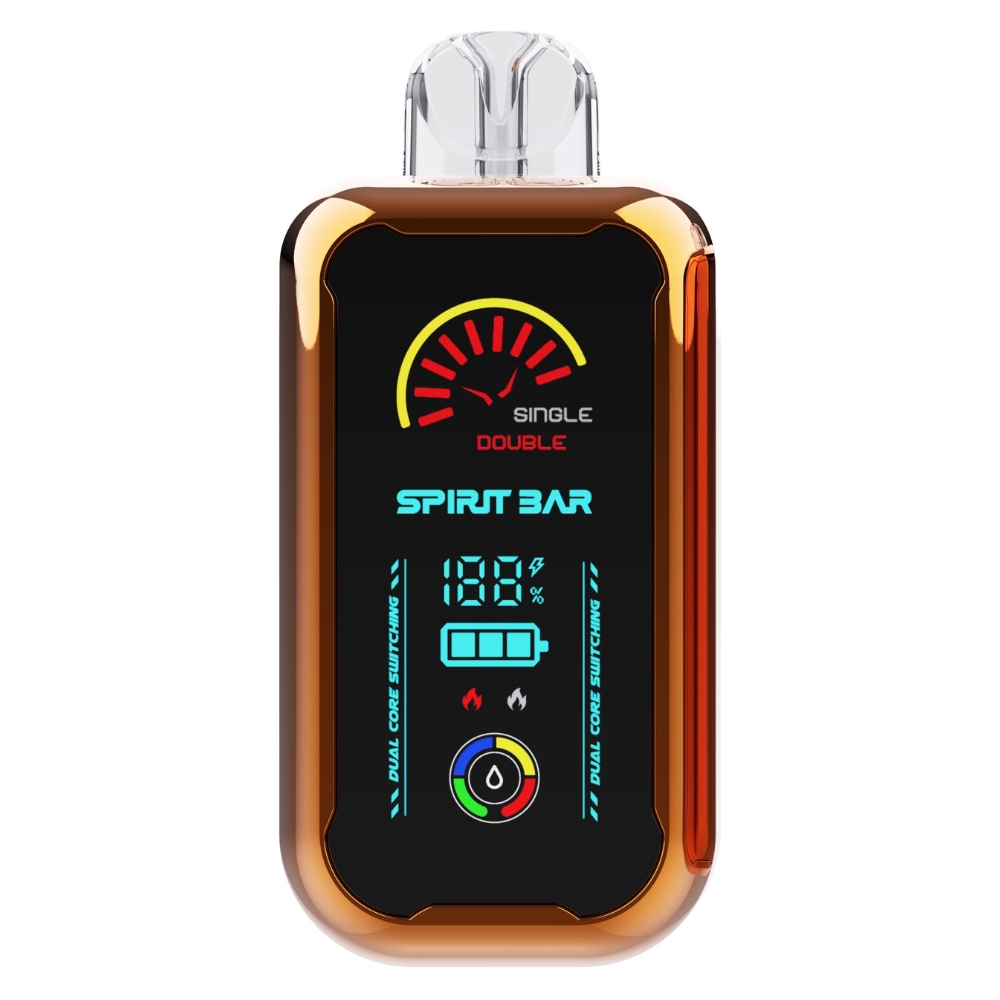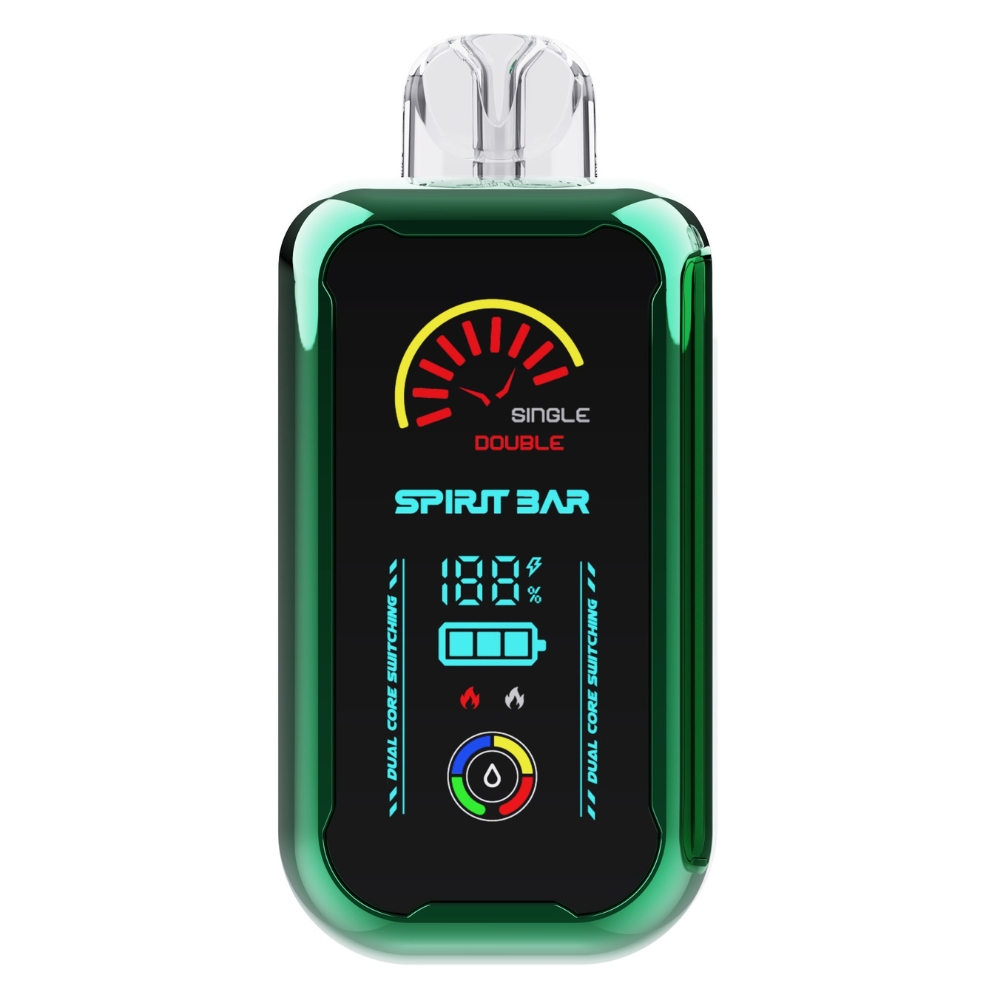Is There an Alternative to Vape? Exploring Healthier Options
Are you looking for an alternative to vaping? Vaping has become increasingly popular in recent years, but it is not without its risks. While it may be a less harmful alternative to smoking traditional cigarettes, vaping still exposes you to potentially harmful chemicals and substances.
Fortunately, there are alternatives to vaping that can help you quit smoking or reduce your nicotine intake. Nicotine replacement therapy (NRT) products, such as nicotine gum or patches, deliver nicotine to your body in a controlled way and can help ease withdrawal symptoms associated with quitting smoking or vaping. Additionally, there are healthy vape alternatives, like MELO Air, that use natural supplements like melatonin to help induce a state of calm.
Whether you are looking to quit smoking or simply want to reduce your nicotine intake, there are alternatives to vaping that can help you achieve your goal. In this article, we will explore some of the most effective alternatives to vaping, their pros and cons, and useful tips for making the switch.
Understanding Vaping
https://www.youtube.com/watch?v=FOm-6b57V6s&embed=true
If you’re considering vaping or looking for an alternative, it’s essential to understand what vaping is, how it works, and its potential risks. Vaping involves inhaling an aerosol produced by an e-cigarette or other vaping device. The aerosol typically contains nicotine, flavorings, and other chemicals. While e-cigarettes are marketed as a safer alternative to smoking, they still pose health risks.
One of the most significant risks of vaping is the potential for addiction to nicotine. Nicotine is highly addictive, and vaping devices deliver nicotine in a concentrated form, making it easy to consume large amounts quickly. Inhaling the aerosol can also irritate your lungs and cause respiratory problems, such as coughing, wheezing, and shortness of breath.
Another potential risk of vaping is exposure to harmful chemicals. While e-cigarettes produce fewer toxic chemicals than traditional cigarettes, they still produce harmful substances such as formaldehyde and acetaldehyde. These chemicals can cause cancer and other health problems.
It’s also essential to note that vaping can be harmful to others around you. The aerosol produced by e-cigarettes can contain harmful chemicals that can be breathed in by others, including children and pets.
Overall, while vaping may be marketed as a safer alternative to smoking, it’s still not entirely safe. If you’re looking for an alternative to vaping or smoking, there are several options available, including nicotine replacement therapy, such as nicotine gum or patches, or non-nicotine alternatives such as herbal cigarettes or flavored air vapes.
Health Implications of Vaping
https://www.youtube.com/watch?v=ygxMr2AE_bc&embed=true
Vaping has become a popular alternative to smoking, but it’s important to understand the potential health implications. While vaping is generally considered less harmful than smoking, it’s still not completely safe. Here’s what you need to know about the short and long-term effects of vaping.
Short Term Effects
Vaping can have immediate effects on your body. Some of the short-term effects of vaping may include:
- Irritation of the eyes, nose, and throat
- Coughing and wheezing
- Nausea and vomiting
- Headaches
- Dizziness
These effects can be caused by the chemicals found in e-cigarettes, including nicotine, flavorings, and other additives. Some people may also experience an allergic reaction to the chemicals found in e-cigarettes.
Long Term Effects
The long-term effects of vaping are not yet fully understood, but research has shown that it can have negative effects on your health. Some of the potential long-term effects of vaping may include:
- Lung damage and respiratory problems
- Increased risk of heart disease
- Increased risk of stroke
- Decreased immune function
- Reproductive system damage
Nicotine, which is found in most e-cigarettes, can also have negative effects on brain development in young people.
It’s important to note that the long-term effects of vaping may not be fully understood for many years, as e-cigarettes have only been widely used for a relatively short period of time. However, early research suggests that vaping may not be a completely safe alternative to smoking.
In conclusion, while vaping may be considered a less harmful alternative to smoking, it’s still important to understand the potential health implications. If you’re considering vaping as a way to quit smoking, it’s important to talk to your doctor about the best options for you.
Alternative Solutions to Vaping
If you’re looking for an alternative to vaping, there are several options available to you. Here are a few:
Nicotine Replacement Therapy
Nicotine replacement therapy (NRT) products deliver nicotine to the body in a controlled way. This consistent dose can help ease nicotine withdrawal symptoms associated with quitting smoking or vaping. NRT products come in several forms, including patches, gum, lozenges, inhalers, and nasal sprays. These products are available over-the-counter or by prescription.
Prescription Medication
There are several prescription medications available that can help you quit smoking or vaping. Bupropion and varenicline are two medications that have been approved by the FDA for smoking cessation. These medications work by reducing cravings and withdrawal symptoms. Talk to your healthcare provider to see if prescription medication is a good option for you.
Cognitive Behavioral Therapy
Cognitive behavioral therapy (CBT) is a type of talk therapy that helps you identify and change negative thought patterns and behaviors. CBT can be helpful for people who are trying to quit smoking or vaping. A therapist can help you develop coping strategies and provide support as you work to quit.
Hypnosis
Hypnosis is a technique that can help you relax and focus your mind. Some people find hypnosis helpful for quitting smoking or vaping. During a hypnosis session, a therapist will guide you into a relaxed state and provide suggestions for behavior change. While hypnosis is not a proven method for smoking cessation, some people find it helpful.
Remember, quitting smoking or vaping is a process that takes time and effort. There is no one-size-fits-all solution, so it’s important to find the method that works best for you. Talk to your healthcare provider or a therapist to develop a quit plan that’s tailored to your needs.
Benefits and Drawbacks of Alternatives
If you’re looking for an alternative to vaping, there are several options available. Each method has its own benefits and drawbacks. In this section, we’ll explore the effectiveness, side effects, and cost of the most popular alternatives to vaping.
Effectiveness
One of the most important factors to consider when choosing an alternative to vaping is its effectiveness. Here’s a breakdown of the effectiveness of each method:
| Method | Effectiveness |
|---|---|
| Nicotine Replacement Therapy | High |
| Heated Tobacco Products | Moderate |
| Herbal Cigarettes | Low |
| E-cigarettes without Nicotine | Low |
Side Effects
Another important factor to consider when choosing an alternative to vaping is its side effects. Here’s a breakdown of the side effects of each method:
| Method | Side Effects |
|---|---|
| Nicotine Replacement Therapy | Headache, nausea, dizziness |
| Heated Tobacco Products | Coughing, throat irritation |
| Herbal Cigarettes | Respiratory issues, allergic reactions |
| E-cigarettes without Nicotine | Throat irritation, lung irritation |
Cost
The cost of each method is another important consideration. Here’s a breakdown of the cost of each method:
| Method | Cost |
|---|---|
| Nicotine Replacement Therapy | High |
| Heated Tobacco Products | Moderate |
| Herbal Cigarettes | Low |
| E-cigarettes without Nicotine | Low |
Overall, each alternative to vaping has its own benefits and drawbacks. It’s important to consider your individual needs and preferences when choosing an alternative.
Personal Stories of Quitting Vaping
If you’re considering quitting vaping, it can be helpful to hear from others who have gone through the process. Here are some success stories and challenges faced by former vapers.
Success Stories
Sarah’s Story: Sarah had been vaping for three years when she decided to quit. She had tried to quit before but found it difficult due to nicotine cravings. This time, she decided to gradually reduce her nicotine intake by switching to lower nicotine e-liquids. She also found that keeping her hands busy with a stress ball or fidget spinner helped her overcome the urge to vape. After a few weeks, Sarah was able to quit vaping altogether.
Mark’s Story: Mark had been vaping for five years and had tried to quit several times without success. He found that the social aspect of vaping made it difficult to quit, as many of his friends were also vapers. However, after experiencing chest pain and shortness of breath, he decided to quit for good. Mark found that exercise helped him cope with nicotine cravings and also helped improve his lung function.
Challenges Faced
Nicole’s Story: Nicole had been vaping for two years when she decided to quit. She found that the physical act of vaping was difficult to replace, as she had become accustomed to having something in her hand and inhaling vapor. Nicole also experienced mood swings and irritability during the first few weeks of quitting. However, she found that talking to a therapist and practicing mindfulness helped her cope with these challenges.
Tom’s Story: Tom had been vaping for four years and had tried to quit several times without success. He found that the withdrawal symptoms were too intense, including headaches, nausea, and sweating. Tom also found it difficult to avoid triggers, such as seeing other people vaping or feeling stressed. However, he found that gradually reducing his nicotine intake and using nicotine replacement therapy, such as patches or gum, helped him overcome these challenges.
Remember, quitting vaping is a personal journey and what works for one person may not work for another. It’s important to find the method that works best for you and seek support from friends, family, or a healthcare professional if needed.
Resources for Quitting Vaping
If you are looking for an alternative to vaping, quitting is the best option. Quitting vaping can be tough, but there are resources available that can help you. Here are some resources that can help you quit vaping:
Support Groups
Support groups can be an excellent resource for quitting vaping. You can connect with others who are going through the same experience and share your journey. You can find support groups in your community or online. Some popular online support groups include Reddit’s Quit Vaping community and Smokefree.gov’s online community.
Apps and Online Tools
There are many apps and online tools that can help you quit vaping. These tools can help you track your progress, manage cravings, and provide support. Some popular apps and online tools include Quit Genius, MyQuit Coach, and Quit Vaping.
Healthcare Professionals
Healthcare professionals can provide you with the support and resources you need to quit vaping. Your healthcare provider can help you develop a plan to quit vaping and provide you with resources to help you manage cravings and withdrawal symptoms. They may also recommend nicotine replacement therapy (NRT) or other medications to help you quit.
Remember, quitting vaping is not easy, but it is possible. With the right resources and support, you can quit vaping and live a healthier life.


